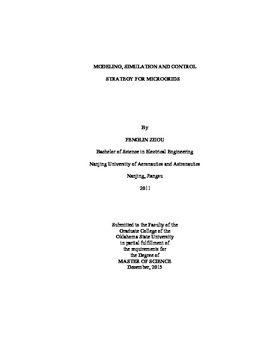| dc.description.abstract | The traditional centralized bulk transmission network of high voltage and long distance has some shortcomings, such as power quality, safety, reliability, economy and flexibility. To survive and develop, people need more and more energy. As the traditional energy sources, such as coal, petrol, gas and other fossil energy resources, being exhausted in the next 100 years, the renewable energy technologies, like solar, wind, tide, geothermal, etc. has been developing rapidly. The best way to utilize the renewable energy is to build a small local grid, which consists of several energy sources and local loads, named as microgrid. The microgrid can operate in two modes, grid-connected mode and island mode. In the grid �connected model, the microgrid will exchange the power flow with utility grid. When emergency comes up, to improve the reliability and stability, the microgrid will be operating in island mode. After the disturbance, the microgrid will reconnect to the utility grid. Based on different characteristics of microsources and microgrid, this thesis sets up a microgrid model with several microsources, including direct-drive wind power system to make maximum use of wind power, which uses battery and hydro as backup. This model applies to the area with sufficient wind and water energy. To ensure the power supply to sensitive load, how to keep the power balance is the most crucial factor. This requires coordinated control strategy. Aiming at reliable power supply and maximum use of renewable energy, this thesis uses a control strategy based on state transition of microgird. | |
